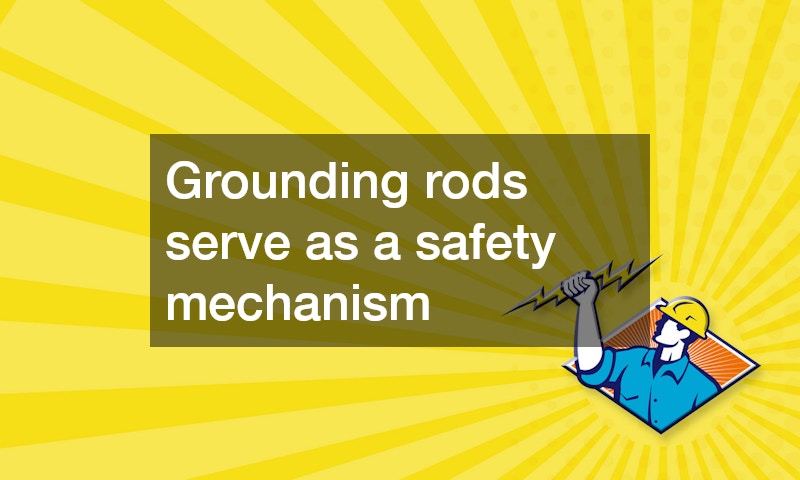

Grounding rods are an essential component in many electrical systems, providing a critical return path for electrical current into the earth. They play a significant role in protecting both equipment and individuals from electrical faults. Driving these rods into the ground might seem straightforward, but there are proven techniques that ensure efficiency and safety.
Understanding the Importance of Grounding Rods
Grounding rods serve as a safety mechanism, offering the most efficient path for electricity to the ground. This is crucial in preventing electrical hazards that could lead to fires or other damage. Without proper grounding, electrical systems are susceptible to overload, and the risk of failure increases significantly.
Furthermore, grounding rods provide stabilization to electrical systems by equalizing voltage discrepancies. This can prevent damage to electronic appliances during electrical surges. By distributing electrical charges evenly, grounding rods help maintain the integrity of the electrical setup.
Regulations often mandate the use of grounding rods in electrical installations, emphasizing their importance. Electricians and installers must adhere to these standards to ensure safety and compliance. Understanding their purpose can guide proper installation and maintenance strategies.
Choosing the Right Material for Grounding Rods
Grounding rods are typically made from materials like galvanized steel, copper, or stainless steel. Each material has its own set of benefits and trade-offs. The choice often depends on factors such as conductivity, resistance to corrosion, and cost.
Copper is favored for its excellent electrical conductivity and resistance to corrosion. However, its higher cost may not always be justified for every project. Galvanized steel, on the other hand, offers a cost-effective alternative with a reasonable lifespan.
Stainless steel provides a balance of durability and resistance to the elements. It’s particularly useful in environments where corrosive elements are present. The choice of material should align with the project’s budget and environmental conditions.
Preparing the Site for Driving Grounding Rods
Preparation is key to ensuring that grounding rods are driven effectively into the ground. The first step is to locate an appropriate site that complies with electrical code requirements and offers unobstructed access. Ideally, the site should be free from large rocks or other underground structures that might create obstacles.
Soil type plays a vital role in the installation process. Soft, moist soils are the easiest to work with, while dense or rocky soils may require additional tools or equipment. Testing the soil prior to installation can provide insight into the necessary adjustments.
It’s also essential to consider the rod’s size and ensure that it’s compatible with the site’s conditions. This includes the depth to which the rod must be driven to achieve optimal grounding. Proper site assessment can save time and effort during installation.
Techniques for Driving Grounding Rods
The method of driving a grounding rod into the ground depends largely on the soil conditions and equipment available. The simplest technique involves manually hammering the rod with a sledgehammer. This requires strength and patience, particularly in heavier soils.
For more challenging terrains, power tools such as a rotary hammer or an electric ground rod driver might be more effective. These tools speed up the process significantly and reduce physical labor. They also offer precision that is difficult to achieve through manual methods.
In extreme conditions, professionals may opt for hydraulic or pneumatic drivers. These are often used in commercial or industrial applications where efficiency and speed are critical. Choosing the right technique ensures that the rod is securely and properly installed.
Ensuring Safety During Installation
Safety should be the foremost concern during the installation of grounding rods. Protective gear, such as gloves and safety goggles, is necessary to safeguard against flying debris and physical strain. It’s crucial to be aware of nearby power lines or underground utilities to prevent accidental contact.
Following manufacturer instructions and local building codes is critical for safety and compliance. This includes ensuring rods are installed at the correct depth and spacing, and in conditions that optimize their function. Any shortcuts taken during this process could result in hazards down the line.
Regularly checking the tools and equipment for damage or wear can also prevent accidents. Proper maintenance and operation of these tools ensure a smoother installation process. Lastly, keeping an organized workspace reduces the risk of trips or falls, contributing to overall safety.
Driving grounding rods efficiently is an essential task that combines knowledge, preparation, and precision. By selecting the appropriate materials and techniques, and adhering to safety standards, the installation process can be both efficient and secure. Grounding rods are fundamental for the safety and function of electrical systems, making their proper installation a critical step.
Understanding the role of grounding rods helps in prioritizing their correct placement and maintenance. This not only protects electrical systems but also ensures compliance with safety regulations. Electricians and handymen alike can benefit from mastering these techniques to enhance both safety and effectiveness in their projects.
Ultimately, grounding rods are a simple but vital part of electrical infrastructure. Their correct installation is not just a matter of following protocol but is pivotal in safeguarding lives and property. Commitment to best practices will always yield the best outcomes in driving grounding rods into the earth.



